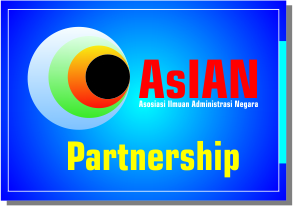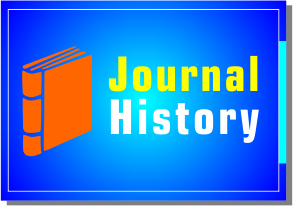Model McKinsey dalam Pengembangan Kapasitas Kelembagaan pada Perusahaan Daerah Air Minum Kota Makassar
DOI:
https://doi.org/10.31334/transparansi.v4i2.1814Keywords:
Capacity building, Institutions, regional companiesAbstract
The organization's implementation in achieving its objectives is largely determined by the extent of the capacity formed to produce optimal performance. This research aims to find out how to develop capacity in Regional Companies and offers a model of capacity building. This research took place at the Makassar Water Supply Company using a descriptive-qualitative approach, the data source obtained from the research informant consisted of directors and middle management level officials, members of the supervisory board, the Chairman of the Regional House of Representatives, experts in the field of management, NGO's that actively monitor the performance of Regional Companies as primary data sources, and secondary data sources obtained from documents available at related agencies. Research data obtained through interviews, observations, secondary data support. Data analysis is conducted based on qualitative analysis through data reduction stages, data presentation, conclusion drawing, and data verification. The results showed that capacity building based on Mc Kinsey capacity building framework in Makassar Water Supply Company has been applied to the aspects of aspirations, strategies, organizations skills, human resources, organization structure, system and infrastructure, and culture. The application looks strong on the aspects of aspirations, strategies, and organization structures, which seems to require development in the aspects of organizations skills, system and infrastructure, human resources, and culture.References
Backer, T. (2000). Strengthening nonprofits: Capacity Building and Philanthropy. Encino, CA:Human Interaction Research Institute.
Baser, H., & Morgan, P. (2008). Capacity, Change and Performance. http://www.ausaid.gov.au/hottopics/pdf/capacity_change_performance_fin al_report.pdf
Blagescu,M. & Young, J. (2006). Capacity Development for Policy Advocacy: Current thinking and approaches among agencies supporting Civil Society Organisations, Journal of Development Institute.
Blumenthal,B.(2003). Investing in Capacity Building: A guide to high-impact approaches. U.S.: The Foundtion Center.
Brown, W. (2000). Organizational Effectiveness in nonprofit human services organizations: The influence of the board of directors. UMI Dissertations. (UMI#9956025). Ann Arbor, MI: Bell & Howell Information and Learning Company.
Brown L., LaFond, A. & Macintyre, K.(2001). Measuring Capacity Building, Measure Evaluation HRN-A-00-97-00018-00, Carolina Population Center, University of North Carolina at Chapel Hill.
Denzin, Norman K, dan Lincoln, Yvonna S., (2009), Handbook of Qualitative Research.Terjemahan.Yogyakarta.Pustaka Pelajar.
Grindle, M.S., (editor), (1997), Getting Good Government : Capacity Building in the Public Sector of Developing Countries, Boston, MA: Harvard Institue for International Development.
GTZ. (2005). Pengembangan Kapasitas di Daerah. Jakarta. Depdagri dan GTZ.
Lewis, A. (2003). UNFPA’s Support to National Capacity Development Achievements and Challenges, Evaluation Report #20, UNFPA.
Light, P., & Hubbard, E. (2002). The capacity building challenge. Washington, D.C.: The Brooking Institute.
Lusthaus, C., Adrien, M.H., & Perstinger, M. (1999). Capacity development: definitions, issues and implications for planning, monitoring and evaluation. Universalia Occasional Paper N35, 1999.
McKenzie, J. (2007). Capacity Building Resource Manual: A report for the Cooperative Venture for Capacity Building.
McKinsey & Company. (2001). Effective Capacity Building In Nonprofit Organizations. Venture Philanthropy Partners.
Stevens, J. (n.d). What Does Capacity Mean? An examination of capacity perceptions within a voluntary sport organisation. Canada, Brock University..
Yin, Robert K. (2011). Studi Kasus Desain dan Metode (Terjemahan). Jakarta: PT RajaGrafindo Persada.
Downloads
Published
Issue
Section
License

This work is licensed under a Creative Commons Attribution-ShareAlike 4.0 International License
Please find the rights and licenses in Transparansi : Jurnal Ilmiah Ilmu Administrasi By submitting the article/manuscript of the article, the author(s) agree with this policy. No specific document sign-off is required.
- License
The commercial use of the article will be governed by the Creative Commons Attribution license as currently displayed on Creative Commons Attribution-ShareAlike 4.0 International License.
2. Author(s)' Warranties
The author warrants that the article is original, written by stated author(s), has not been published before, contains no unlawful statements, does not infringe the rights of others, is subject to copyright that is vested exclusively in the author and free of any third party rights, and that any necessary written permissions to quote from other sources have been obtained by the author(s).
3. User Rights
Transparansi : Jurnal Ilmiah Ilmu Administrasi spirit is to disseminate articles published are as free as possible. Under the Creative Commons license, Transparansi : Jurnal Ilmiah Ilmu Administrasi permits users to copy, distribute, display, and perform the work for non-commercial purposes only. Users will also need to attribute authors and Transparansi : Jurnal Ilmiah Ilmu Administrasi on distributing works in the journal and other media of publications.
4. Co-Authorship
If the article was jointly prepared by more than one author, any authors submitting the manuscript warrants that he/she has been authorized by all co-authors to be agreed on this copyright and license notice (agreement) on their behalf, and agrees to inform his/her co-authors of the terms of this policy. Transparansi : Jurnal Ilmiah Ilmu Administrasi will not be held liable for anything that may arise due to the author(s) internal dispute. Transparansi : Jurnal Ilmiah Ilmu Administrasi will only communicate with the corresponding author.
5. Miscellaneous
Transparansi : Jurnal Ilmiah Ilmu Administrasi will publish the article (or have it published) in the journal if the article’s editorial process is successfully completed. Transparansi : Jurnal Ilmiah Ilmu Administrasi editors may modify the article to a style of punctuation, spelling, capitalization, referencing and usage that deems appropriate. The author acknowledges that the article may be published so that it will be publicly accessible and such access will be free of charge for the readers as mentioned in point 3.
Every accepted manuscript should be accompanied by "Copyright Transfer Agreement"prior to the article publication.











